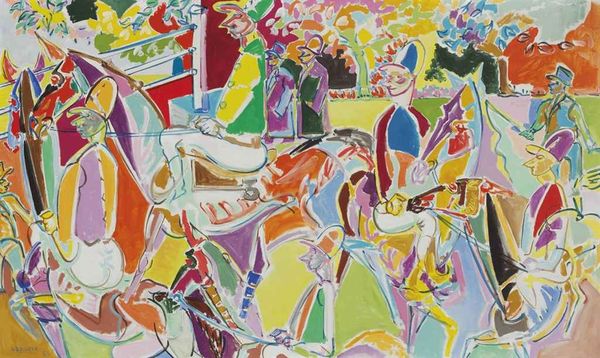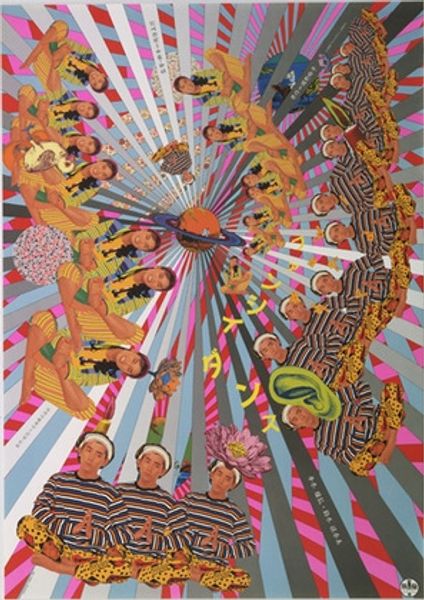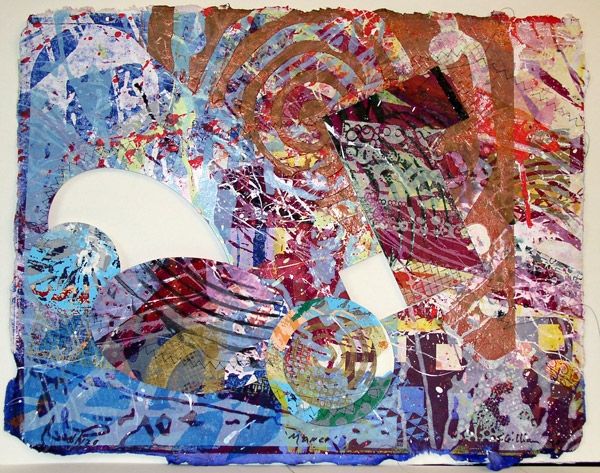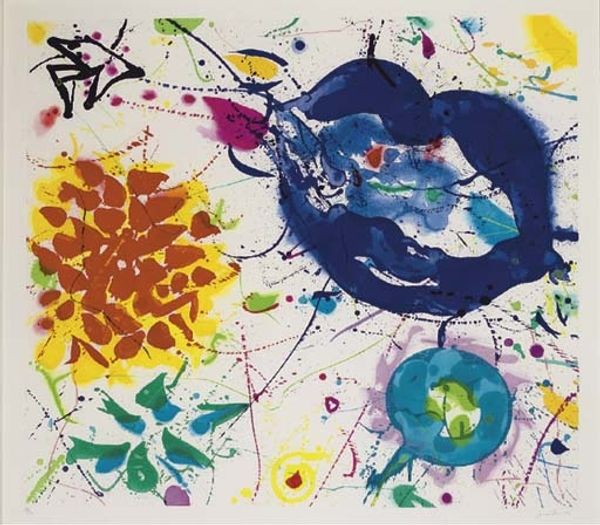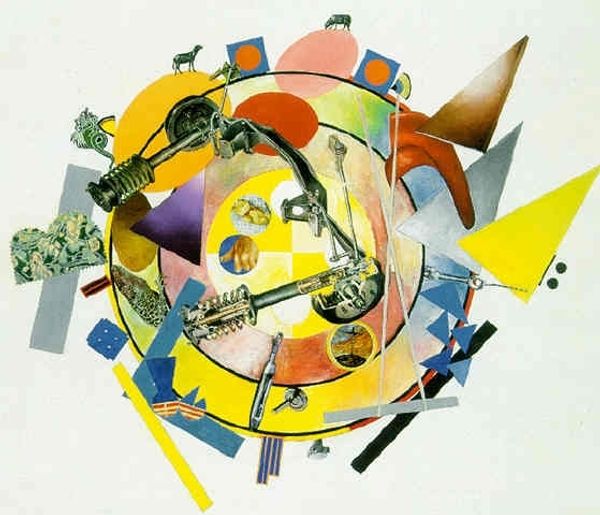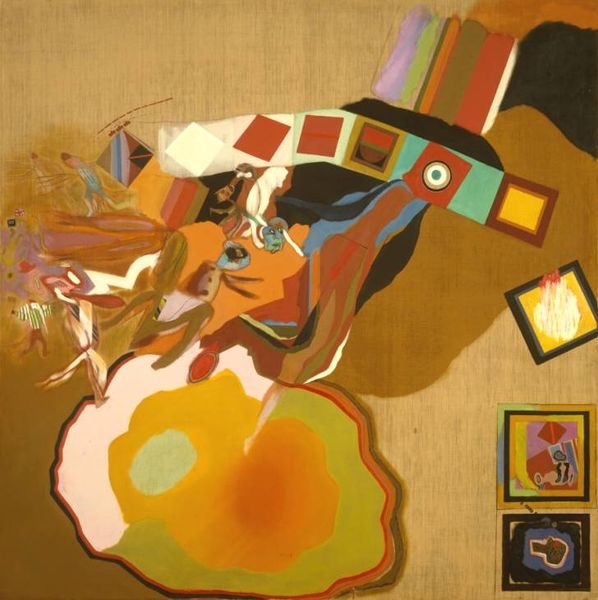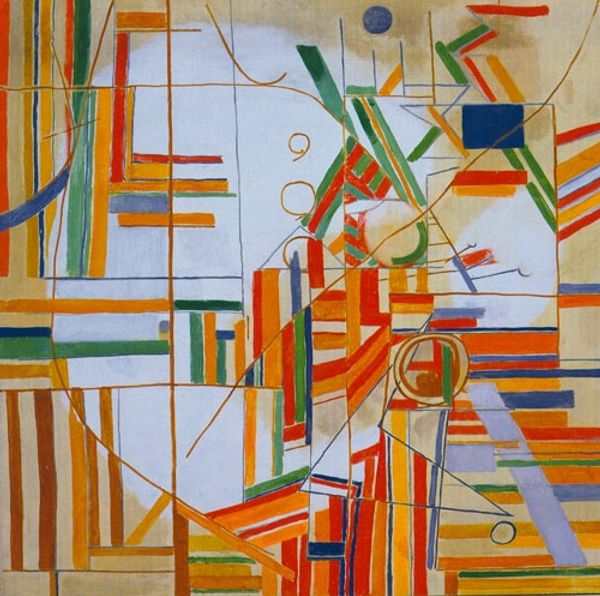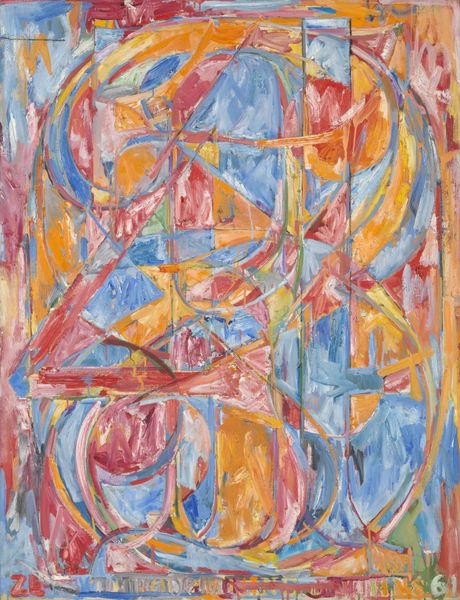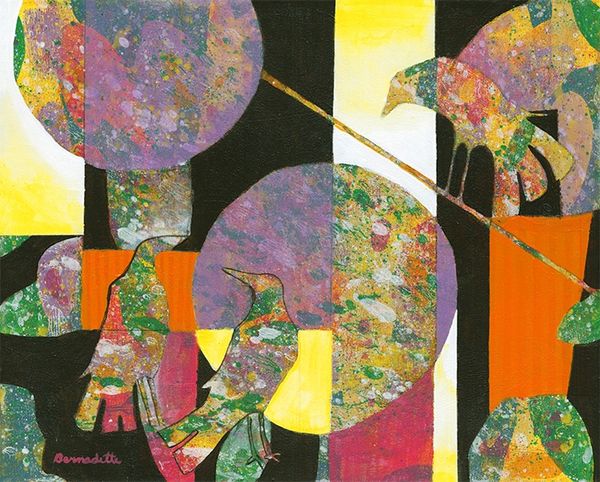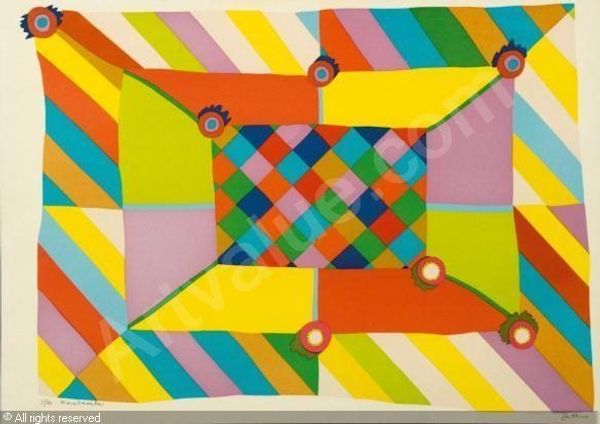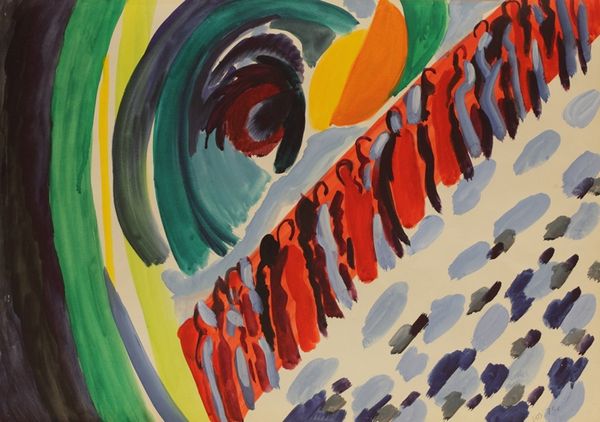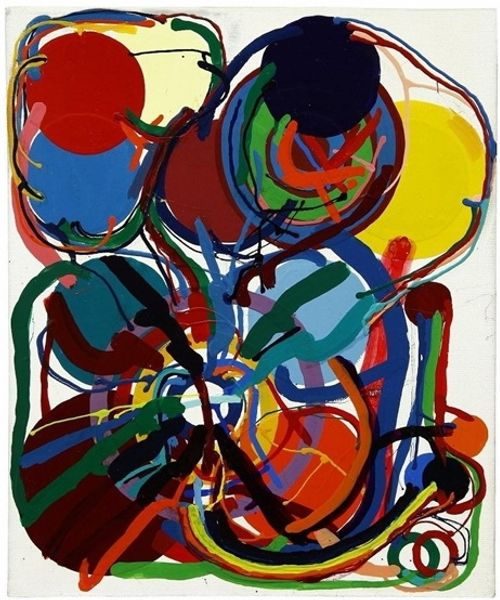
Copyright: Stanley Pinker,Fair Use
Curator: Welcome. Let's talk about Stanley Pinker’s “The Wheel of Life” from 1974, rendered in acrylic paint. Editor: This piece is...certainly a lot to take in. It feels chaotic but deliberately so, like a dream logic. So many bizarre details within that wheel-like structure. How do you approach a work like this? Curator: I see Pinker challenging high art traditions by embedding accessible visual puns within his artwork, much like Pop Art, or even Naive Art which, due to its visual simplicity, doesn't get the attention it deserves. The egg, for instance. What's your interpretation of it here? Editor: An egg? Is it one of those white circles right at the top? Or… you mean “egg art” literally? I haven't heard of that before! Curator: Pinker is engaging with 'egg art' - almost Dadaist with how literally absurd and almost meaningless it is. Now, look closely at the acrylic paint he used. Notice anything peculiar? Editor: It's very...flat. Almost like it avoids depth on purpose. Everything seems upfront, equally weighted. He’s also using it in quite thin layers – it's almost transparent in places. What are we meant to infer from this treatment? Curator: Exactly. Think about the context: the rising tide of mass production. He’s deliberately flattening the labor out, rejecting notions of skilled artistry to address broader questions about work itself, what kind of labor should we truly value. Editor: So he is highlighting the social contexts within which "high" art is consumed and appraised? I see, I thought this had just symbolic value. Curator: It absolutely has both, doesn’t it? It urges us to see the value in artistic output beyond a question of aesthetic virtuosity, shifting us into interrogating underlying power dynamics. Editor: I’ll admit, that changes my view completely! I initially looked at the symbolism. Thanks, that perspective gives me so much to consider!
Comments
No comments
Be the first to comment and join the conversation on the ultimate creative platform.
